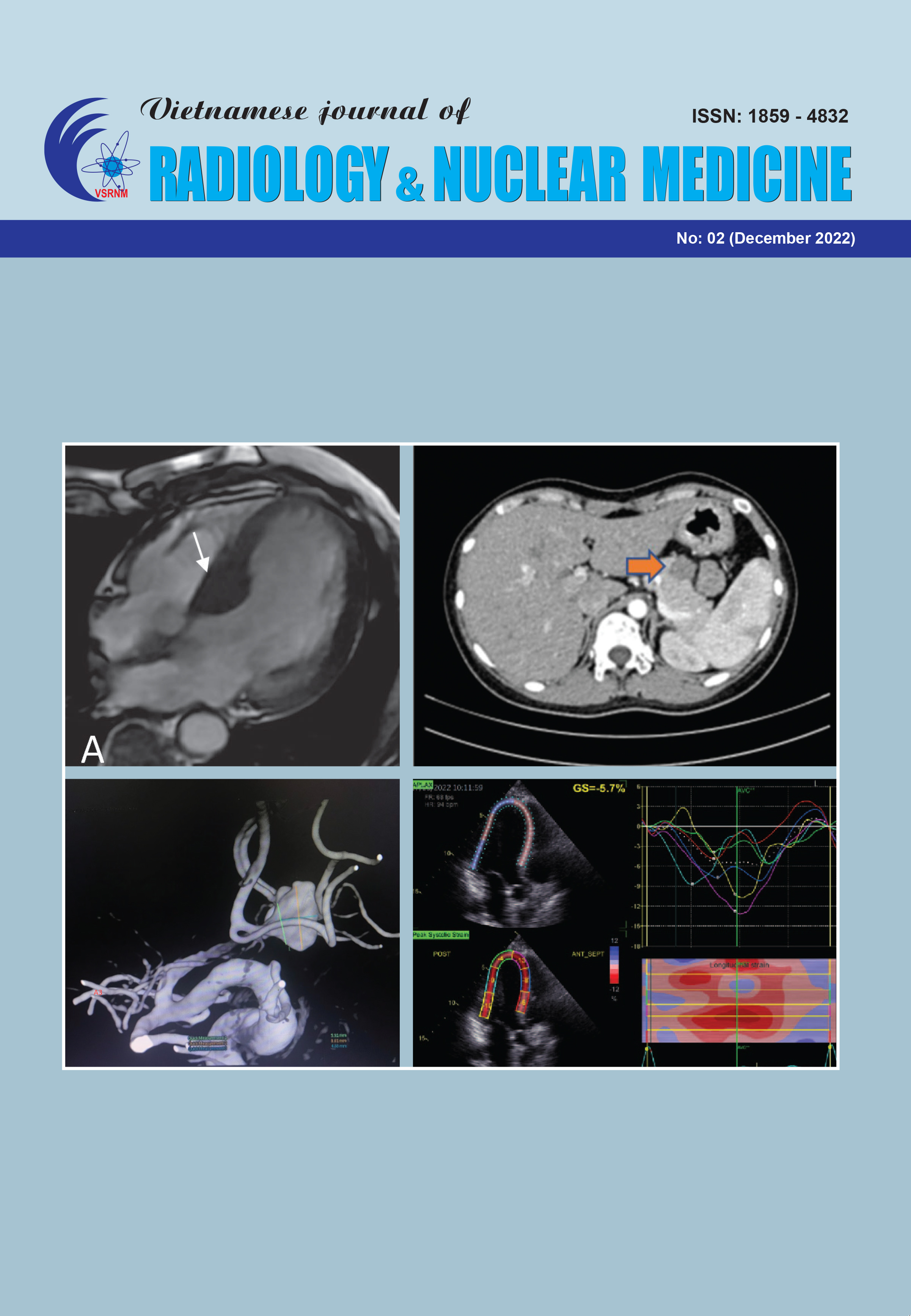STUDY THE CHARACTERISTICS OF PET/CT IN STAGING CERVICAL CANCER CANCER AT HO CHI MINH CITY ONCOLOGY HOSPITAL, HCM CITY
Tóm tắt
Objectives: Identify the mean SULmax level of the tumor in cervical cancer and compare the SULmax level between different histological types. Identify the mean size and mean SULmax level of metastatic lymph nodes in cervical cancer. Determine the percentage of cervical cancer patients with stage change after PET/CT. Determine the rate of accidental distant metastases detected by PET/CT.
Research subjects: 37 patients with a diagnosis of cervical cancer underwent PET/CT scans at Ho Chi Minh City Oncology Hospital from January 2020 to November 2021, the purpose of PET/CT was to evaluate the stage of the disease before treatment.
Study design: Cross-sectional description
Results: The mean SULmax of the primary tumor in cervical cancer was 13.88. The mean SULmax of squamous cell carcinoma and adenocarcinoma is quite similar and much higher than that of small cell carcinoma. Squamous cell carcinoma type had the highest median SULmax. The mean size of metastatic lymph nodes in cervical cancer was 20.79 mm with a mean SULmax of 10.72. There were 48.6% of cervical cancer patients who changed their disease stage after PET/CT scan. In which, 35.1% of the patients increased stage and 13.5% of the patients decreased stage. The rate of newly discovered distant metastasis was 27%. The most common site of newly discovered distant metastasis was in the supraclavicular lymph nodes.
Conclusion: Cervical cancer had a high affinity for 18F-FDG and the mean of SULmax of primary tumors was often very high. Squamous cell carcinoma tumors had the highest SULmax uptake of all histopathological types. Lymph node metastases in cervical cancer also had high 18F-FDG uptake values. Nearly half of cervical cancer patients had stage changes after PET/CT scan, in which, most patients have increased the stage due to new distant metastases detected after PET/CT scan. The majority of patients increased stage due to newly discovered distant metastatic lesions after PET/ CT in the group of patients with stages IIIC1r to IIIC2r. This showed that the changes in indications for PET/CT scans in cervical cancer currently applied at Ho Chi Minh City Oncology Hospital were very practical and effective.*

